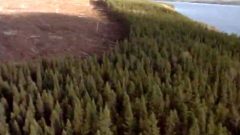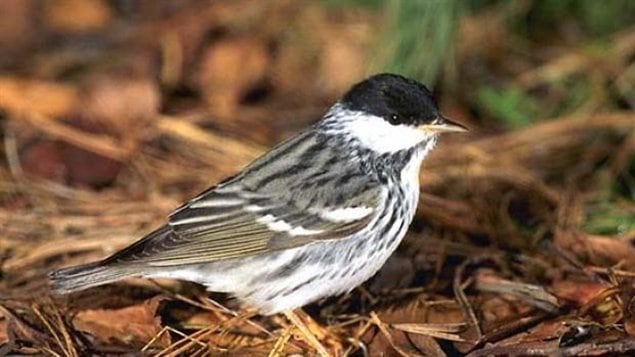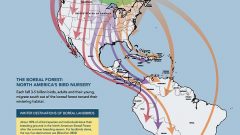They’re pretty to look at, they please us with pretty melodies, but migratory songbirds also occupy a vastly important place in the ecosystem.
The Boreal Songbird Initiative has just released a report calling for a minimum 50% of Canada’s boreal forest to be protected from development.
Jeff Wells is the Science and Policy Director for the Boreal Songbirds Initiative.
ListenThe report is called “Boreal Birds Need Half- Maintaining North America’s Bird Nursery and Why It Matters

Only a small percentage of Canada’s boreal forest currently have some degree of protection from development.
The Boreal Songbird Initiative (BSI) is now calling for half the forest to be protected. Besides critical actions like purifying the earth’s air, the forest is provides food, shelter and nesting area to around 3 billion migratory songbirds and waterfowl, in addition to a vast variety of animals, fish and amphibians.
Where once it was thought that protecting 10% of the forest would provide needed shelter, it’s now realized that about half of the current species would disappear if only that amount of forest was protected.
BSI, now joined by a host of others environmental organizations, is saying we now know that a much greater area is needed; 75 percent would be ideal but at least half of the current extent of the boreal forests across Canada need to be protected.

Forestry companies leave a small swath of trees near roads and water so that from the ground, the clearcut wiping out of the forest can not be seen. ( film “Erreur Boreale”) CLICK to ENLARGE
They also say that since a huge area of the boreal forest is presently untouched, this is a golden opportunity to take action before a serious problem arises
In spite of certain recent plans by some provinces to increase development and industry access to forests, Jeff Wells says that already Canada’s biggest provinces of Ontario and Quebec have promised to protect 50 percent of their forests.
He says he’s optimistic that forward thinking industry, politicians and environmentalists can work together to allow a balance between the need for preservation and for development.
According to the Canadian Parks and Wilderness society,
– Logging
Each year, more than 8,000 square kilometres are logged in Canada.
Much of Canada’s southern Boreal forest has been licenced to logging companies. Approximately one million hectares of Canada’s public forests and roughly 90 percent of this area is clearcut.
Logging can cause the loss of old growth forests from the landscape, degradation of wildlife habitat and conversion of conifer-dominated forests to hardwood.
– Oil and gas
Underneath Canada’s Boreal Forest lies an oil deposit the size of Florida – the oil sands.
Alberta’s Boreal Forests have already been fragmented by 88,000 oil and gas well sites, and a massive expansion of oil sands extraction is planned in the coming years.
The development of oil sands mining leases will result in the clearing of 300,000 hectares of Boreal Forest and constructing 30,000 km of roads, leaving 80% of the remaining Boreal Forest within 250m of a road, pipeline or well site.
– Mining
Over 90% of the Boreal forest is currently open for mining exploration and claim staking.
While mine sites themselves are relatively small and isolated, the big impact comes from the network of roads and seismic lines created during exploration, and the tailing ponds and waste left behind after mining. Staked lands are considered ‘unavailable for protection’ unless the industry agrees to remove the Crown’s mineral reserves
other Boreal songbird and related forest reports
New Brunswick forestry plan mar 2014








For reasons beyond our control, and for an undetermined period of time, our comment section is now closed. However, our social networks remain open to your contributions.